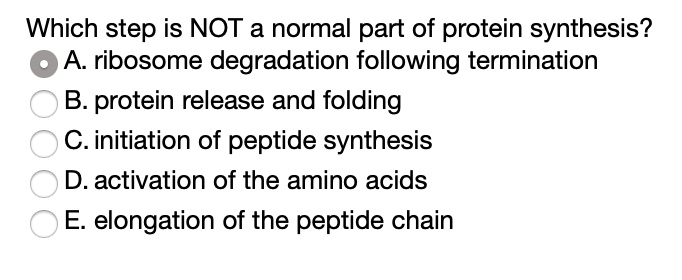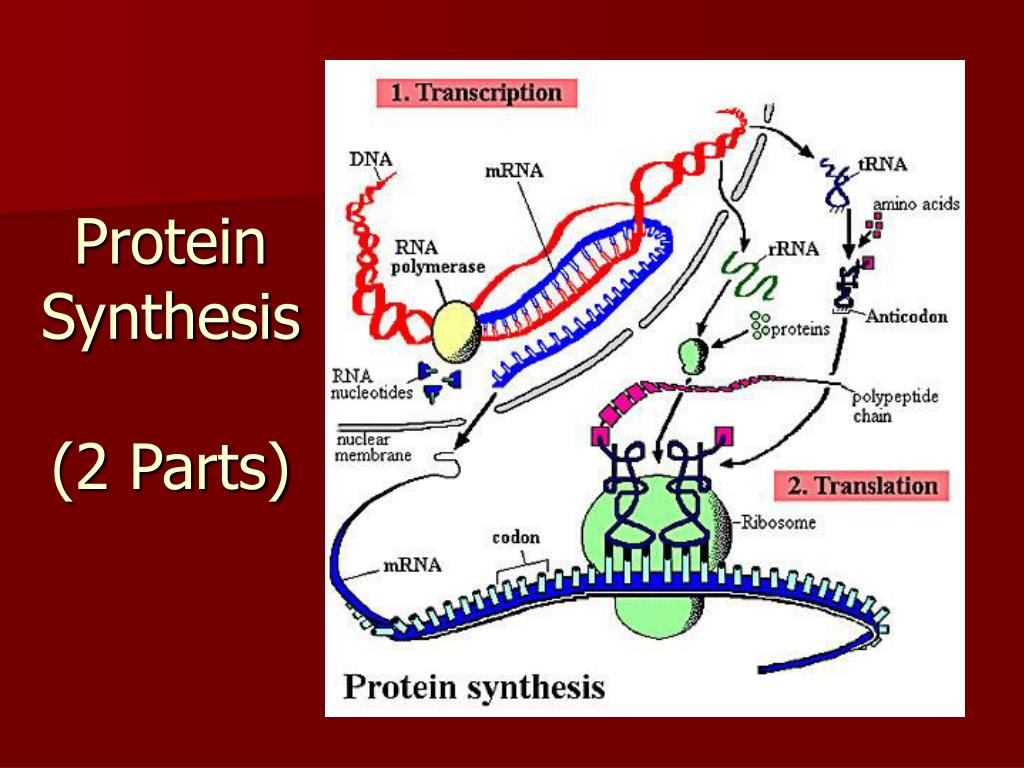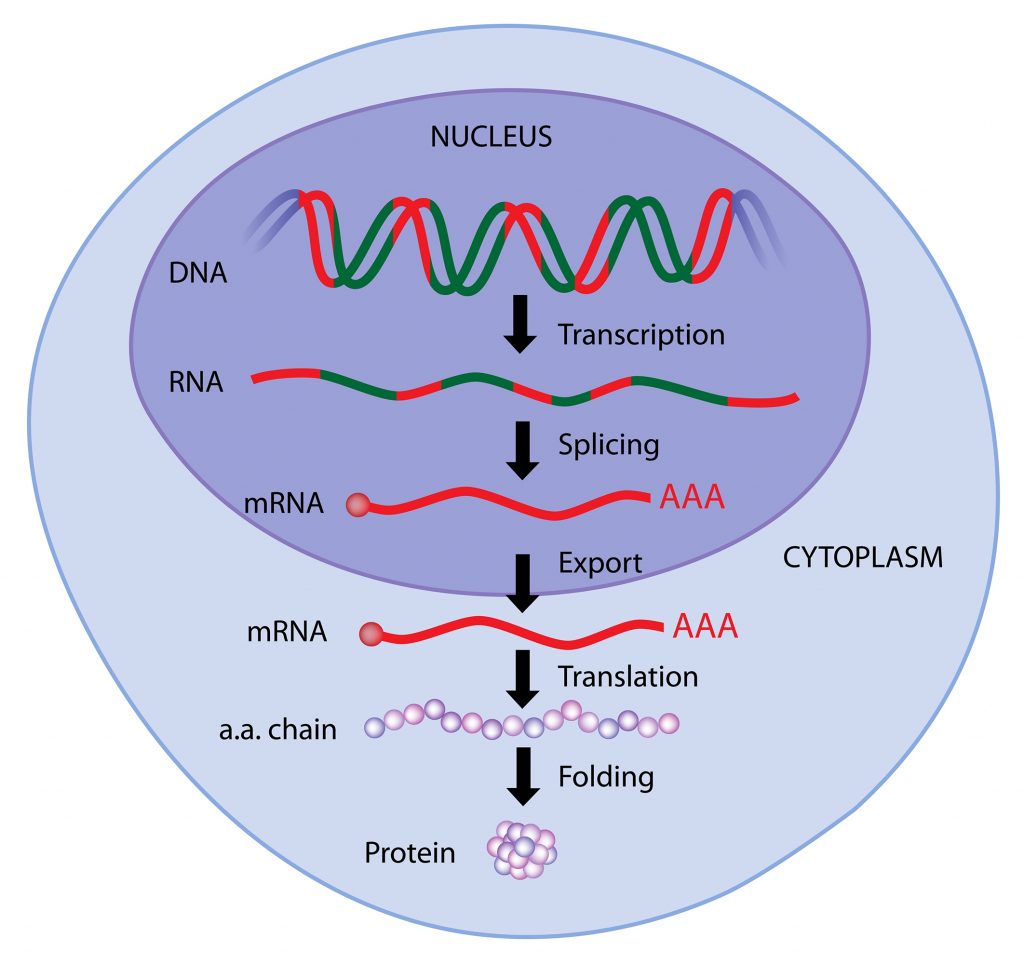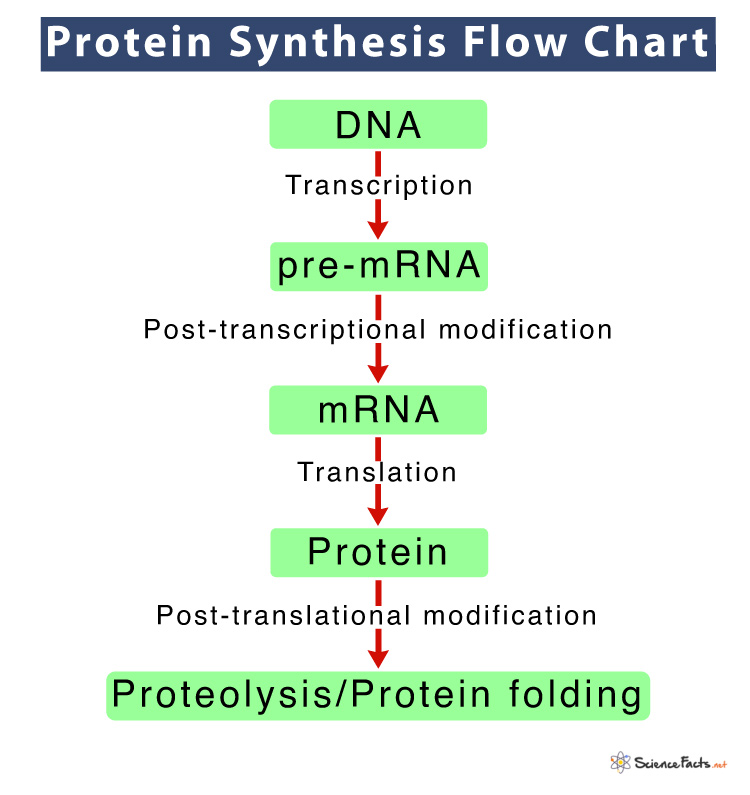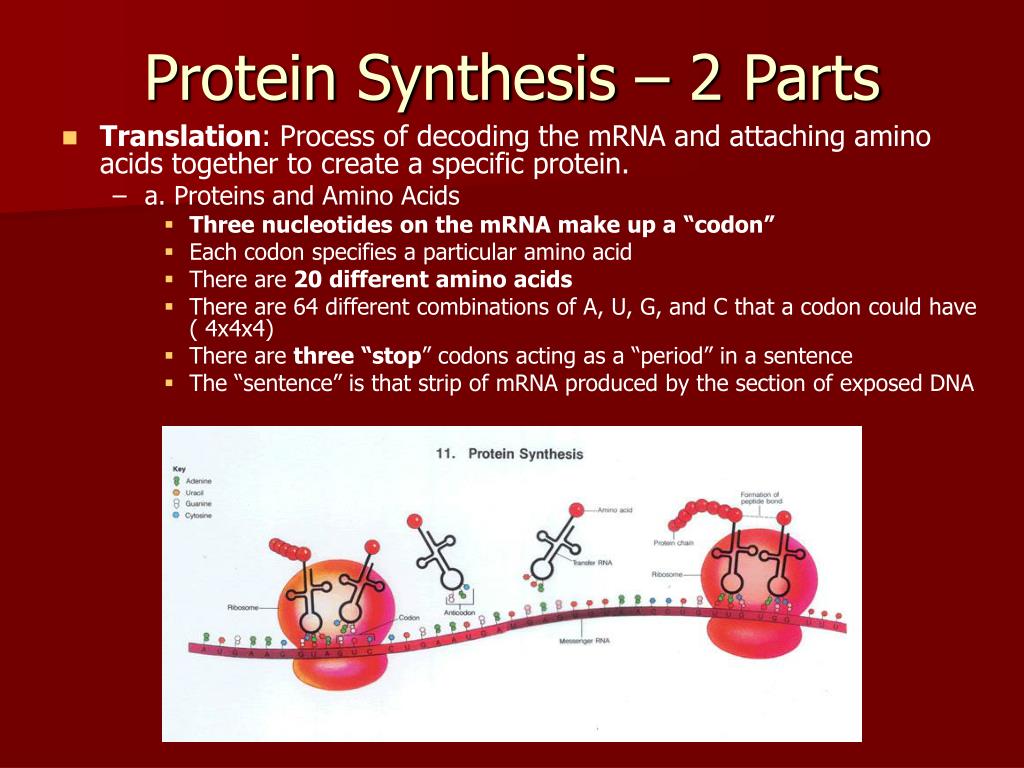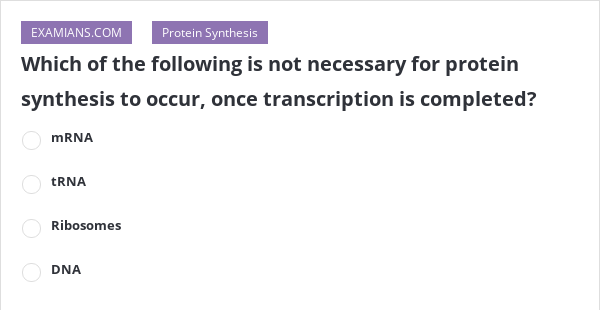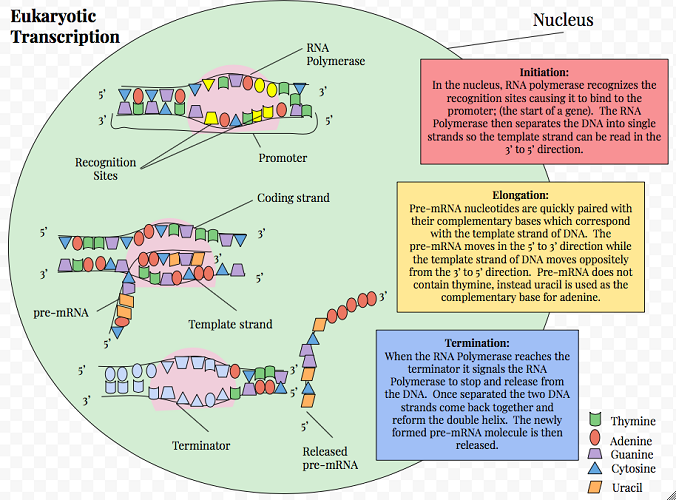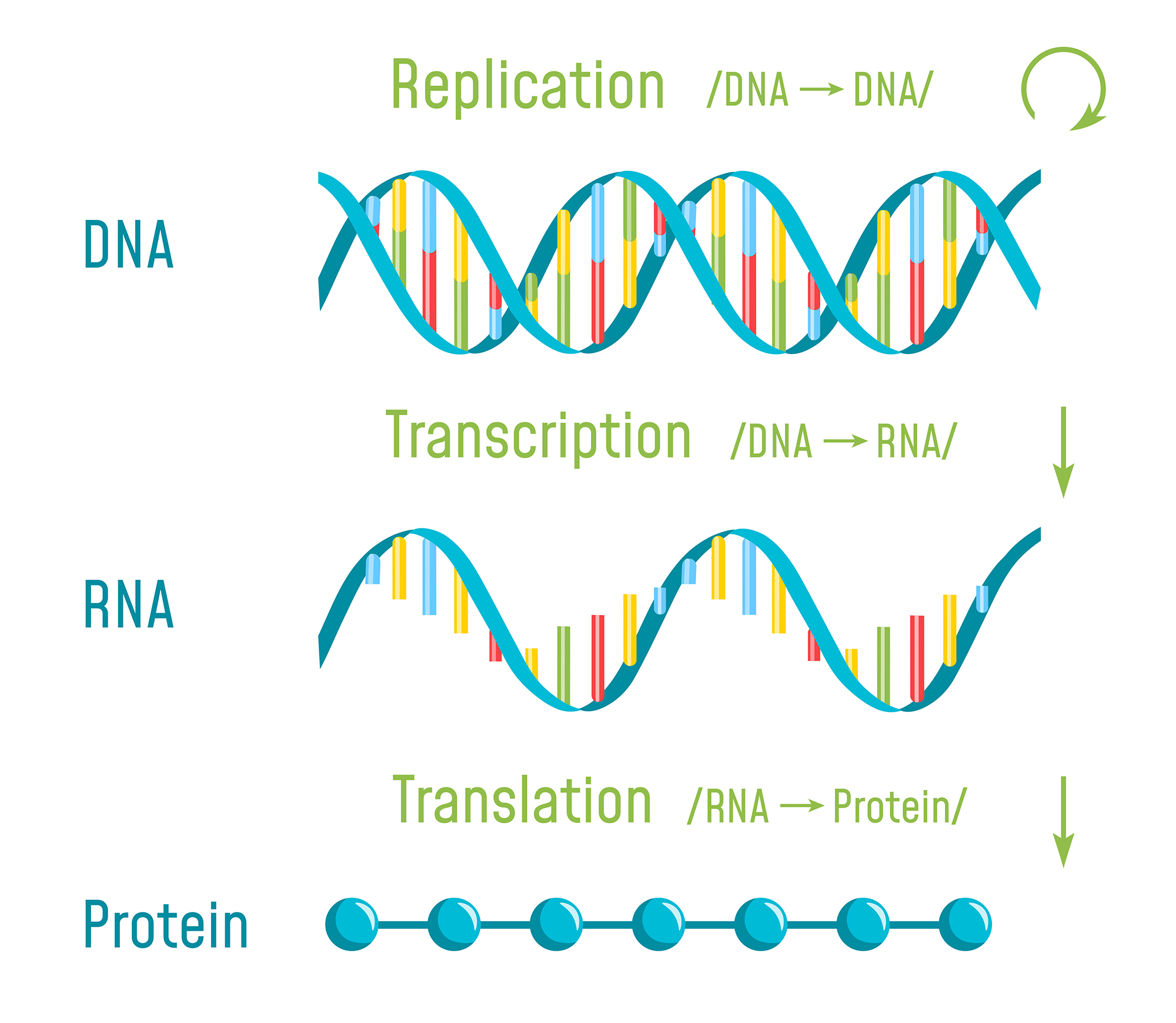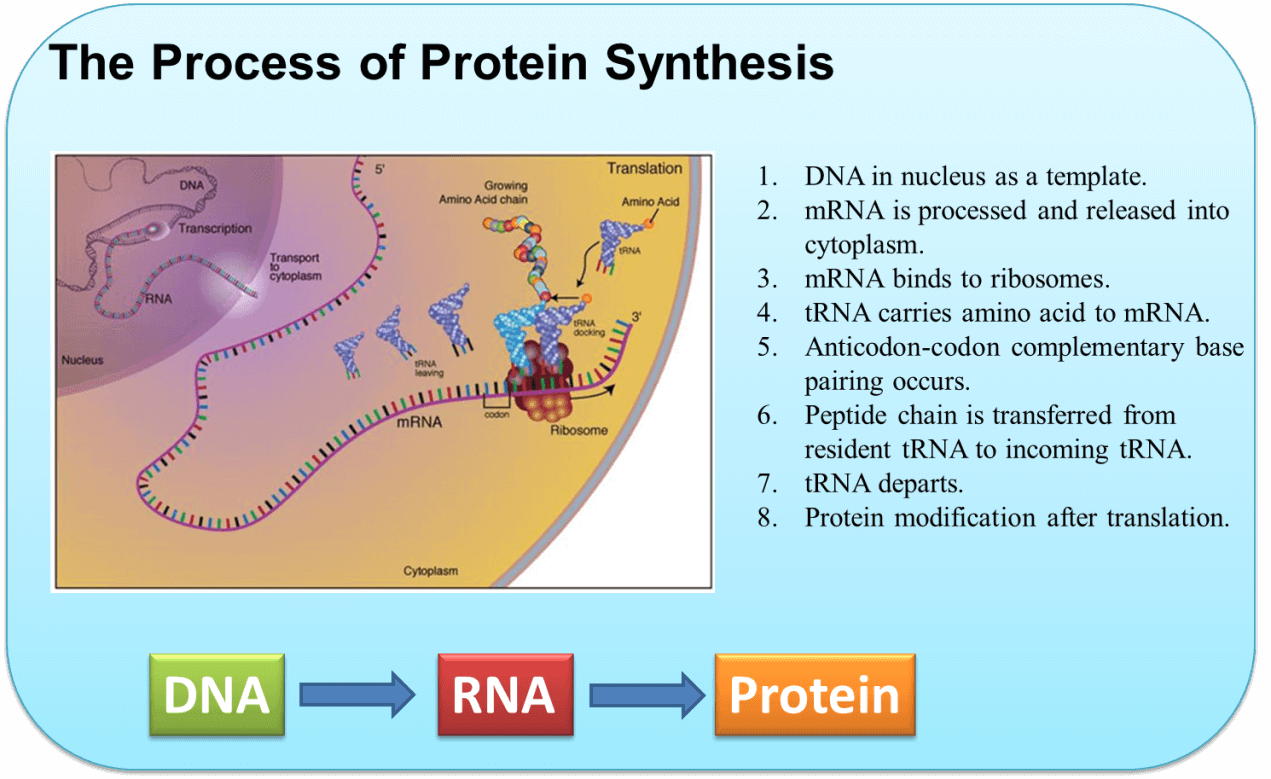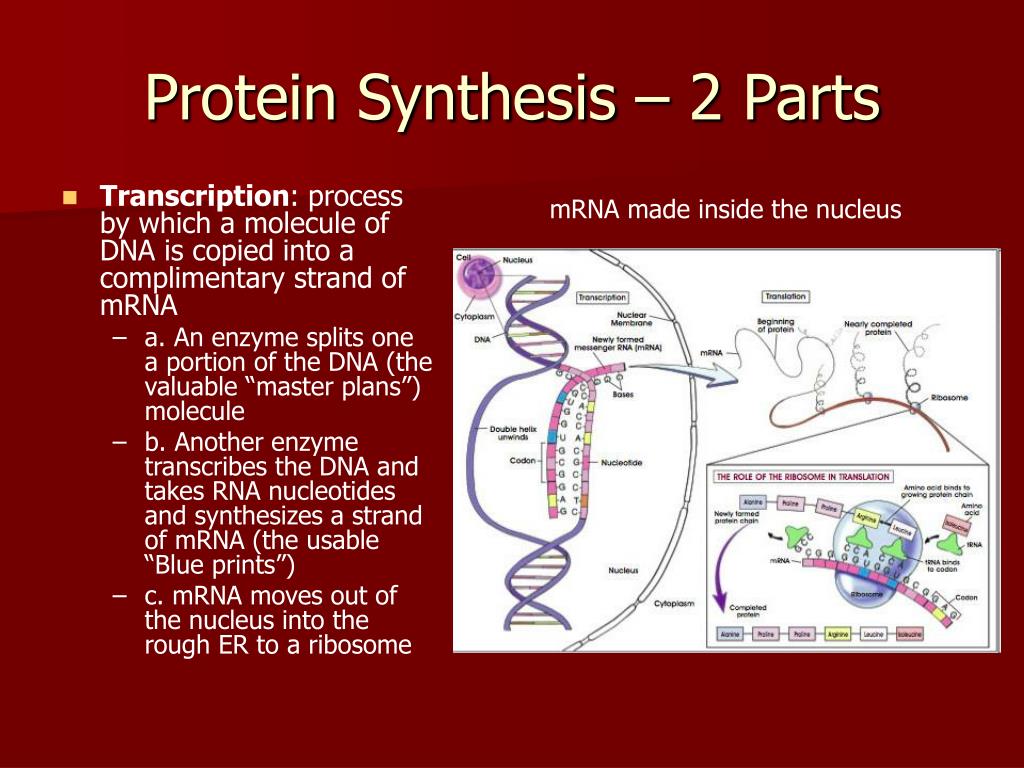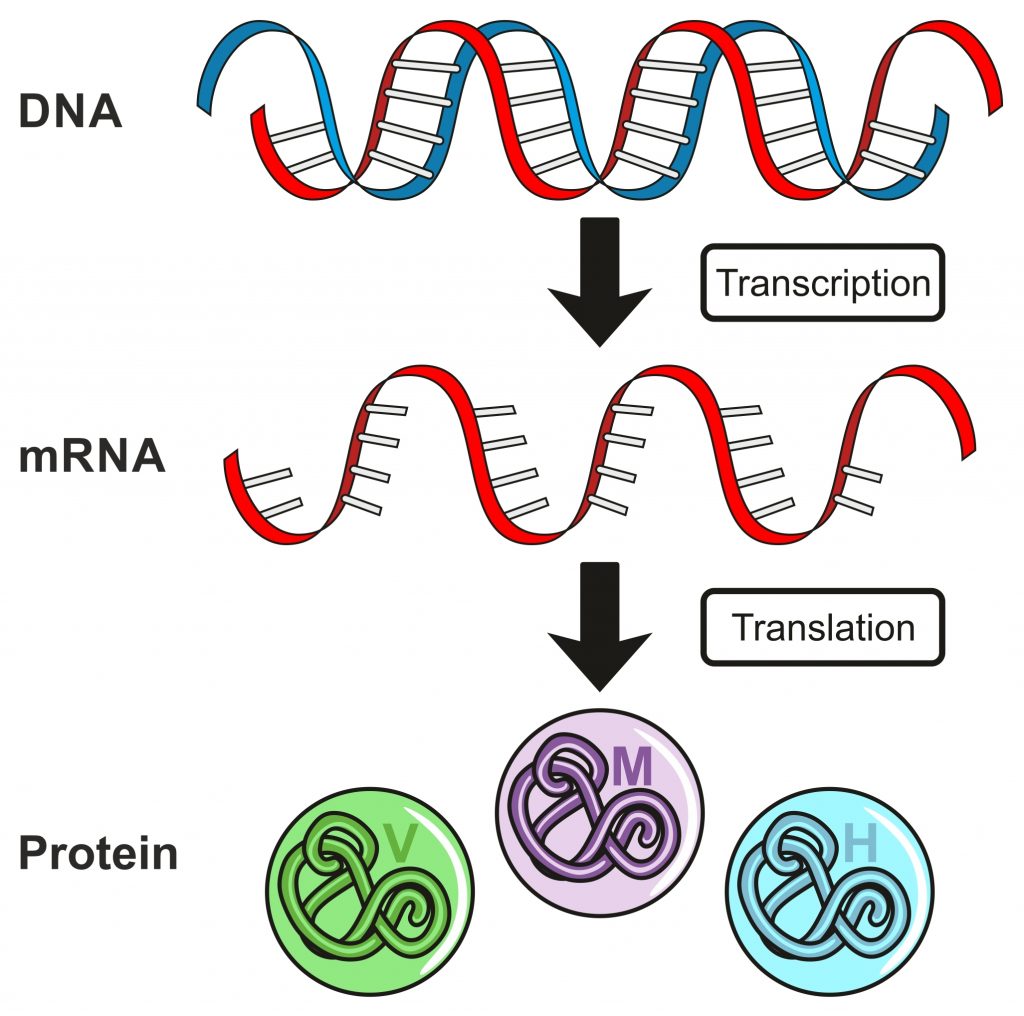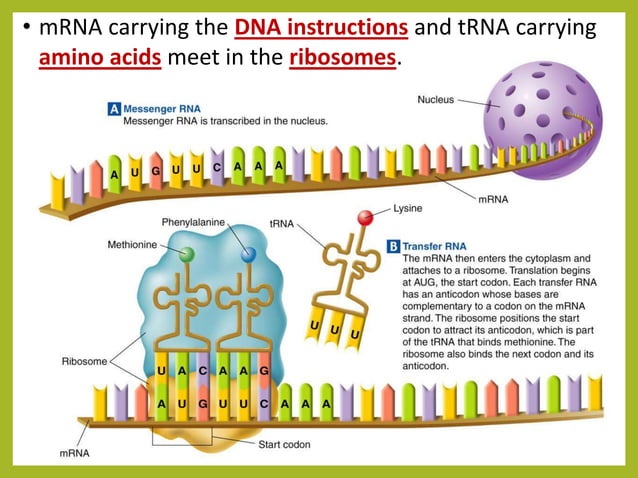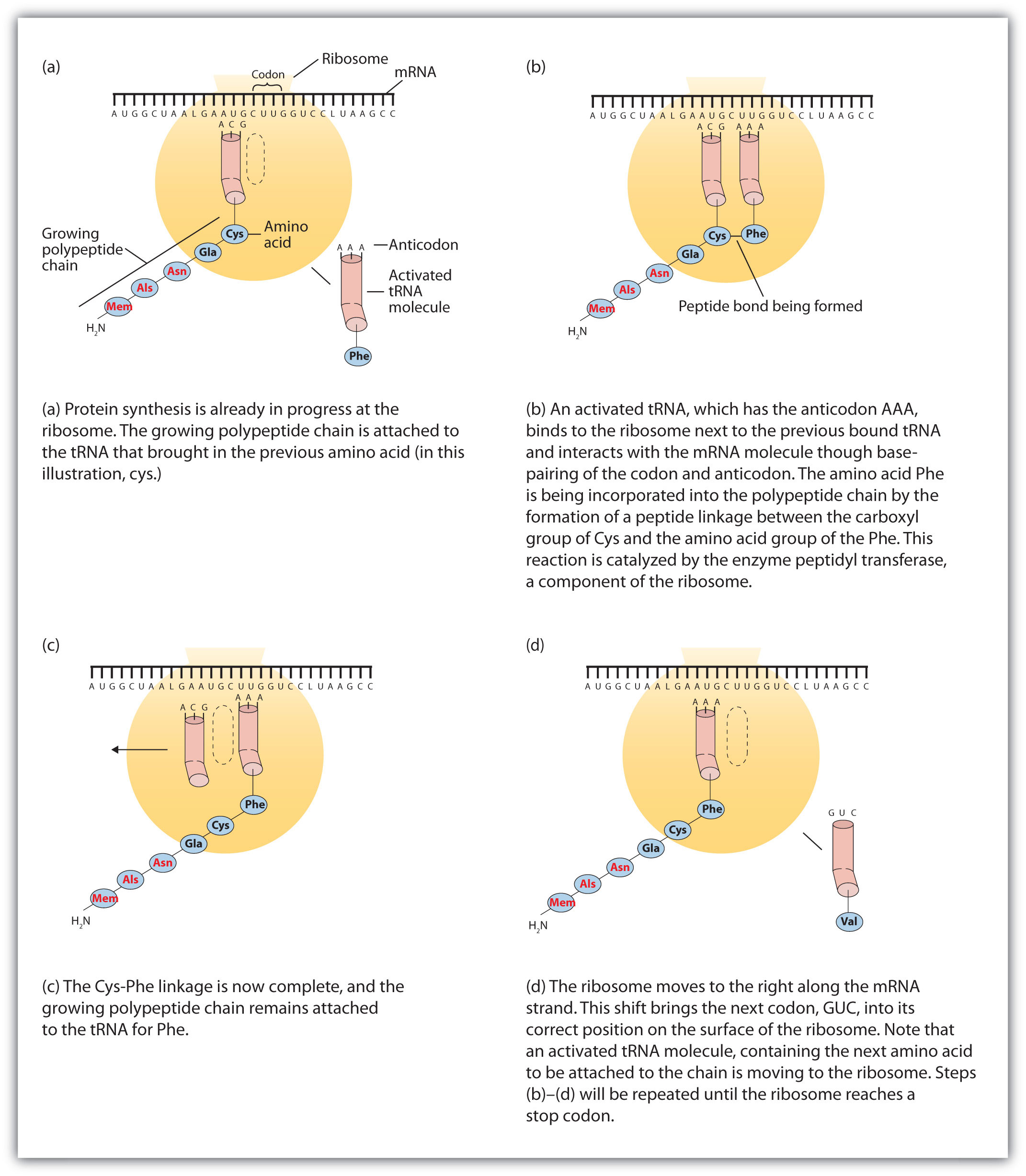Which Of The Following Is Not Part Of Protein Synthesis
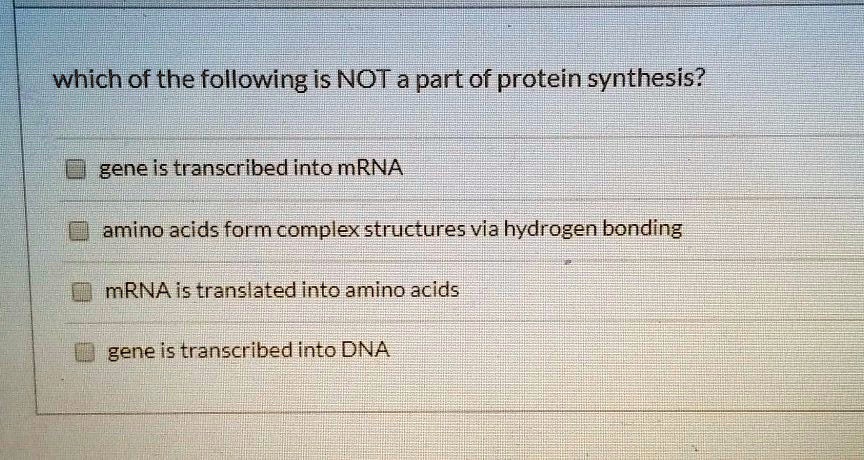
The intricate process of protein synthesis, fundamental to all life, has long captivated scientists and educators alike. Understanding the steps involved is crucial for comprehending cellular function and disease mechanisms.
Recent discussions in biology education have centered on clarifying the exact components of this complex process. A common question arises: which step, often presented in simplified models, is not actually a direct part of protein synthesis?
Protein Synthesis: A Core Biological Process
Protein synthesis, also known as translation, is the process by which cells build proteins. It's a vital function carried out by all living organisms. The process relies on ribosomes and involves the decoding of mRNA to assemble a specific amino acid chain.
The central dogma of molecular biology, often presented as DNA to RNA to protein, highlights protein synthesis as the final step in gene expression. The dogma explains the flow of genetic information within a biological system.
Key Steps in Protein Synthesis
The main steps of protein synthesis generally include initiation, elongation, and termination. Initiation is the start, elongation is the body of the synthesis where the protein is created, and termination is the conclusion of the process. Each step relies on specific molecular machinery and precise regulation.
Initiation: This phase begins with the mRNA binding to the ribosome, along with the initiator tRNA carrying the first amino acid, usually methionine. Several initiation factors are involved to ensure the process starts correctly.
Elongation: In this phase, the ribosome moves along the mRNA, reading each codon (a sequence of three nucleotides). The corresponding tRNA molecule, carrying the correct amino acid, binds to the codon.
A peptide bond forms between the new amino acid and the growing polypeptide chain. The ribosome then translocates to the next codon, and the process repeats.
Termination: Elongation continues until the ribosome encounters a stop codon on the mRNA. Release factors bind to the stop codon, causing the polypeptide chain to be released from the ribosome. The ribosome then dissociates into its subunits.
The Misconception: Transcription
While protein synthesis focuses on translation, a common point of confusion lies with transcription. Transcription precedes translation and is the process where DNA is copied into mRNA.
Transcription is undoubtedly crucial for protein production because it creates the mRNA template that directs the synthesis of proteins. However, transcription is not a direct step *within* protein synthesis itself.
The question often arises because both transcription and translation work together. Transcription creates the messenger, while translation is what delivers that message.
Why This Distinction Matters
Understanding the difference between transcription and translation is important for several reasons. It helps students understand the complex flow of genetic information within a cell. The difference also highlights the different enzymes and processes involved in each phase.
From a research perspective, distinguishing between the two processes is crucial for developing targeted therapies. Some drugs target transcription to block mRNA synthesis, while others interfere with translation to prevent protein production.
Implications for Education
Clarifying the individual steps of gene expression can significantly enhance biology education. It enables students to appreciate the complexity and precision of cellular processes. This deeper understanding can facilitate better problem-solving and critical thinking skills within the field.
Educators can use visual aids, such as diagrams and animations, to illustrate the steps involved in transcription and translation. Interactive simulations also provide students with opportunities to manipulate variables and observe the effects on protein production.
"It's essential that students grasp the distinction between transcription and translation to fully understand how genes are expressed and regulated," says Dr. Anna Sharma, a professor of molecular biology.
Conclusion
In conclusion, while transcription is a necessary precursor to protein synthesis, it is not a step *within* the process of translation itself. Protein synthesis strictly refers to the translation of mRNA into a polypeptide chain through the processes of initiation, elongation, and termination.
This distinction is important for clear understanding of the central dogma and opens avenues for researchers to develop precise therapies. By teaching the differences effectively, we empower students to better understand the complexities of life at the molecular level.
